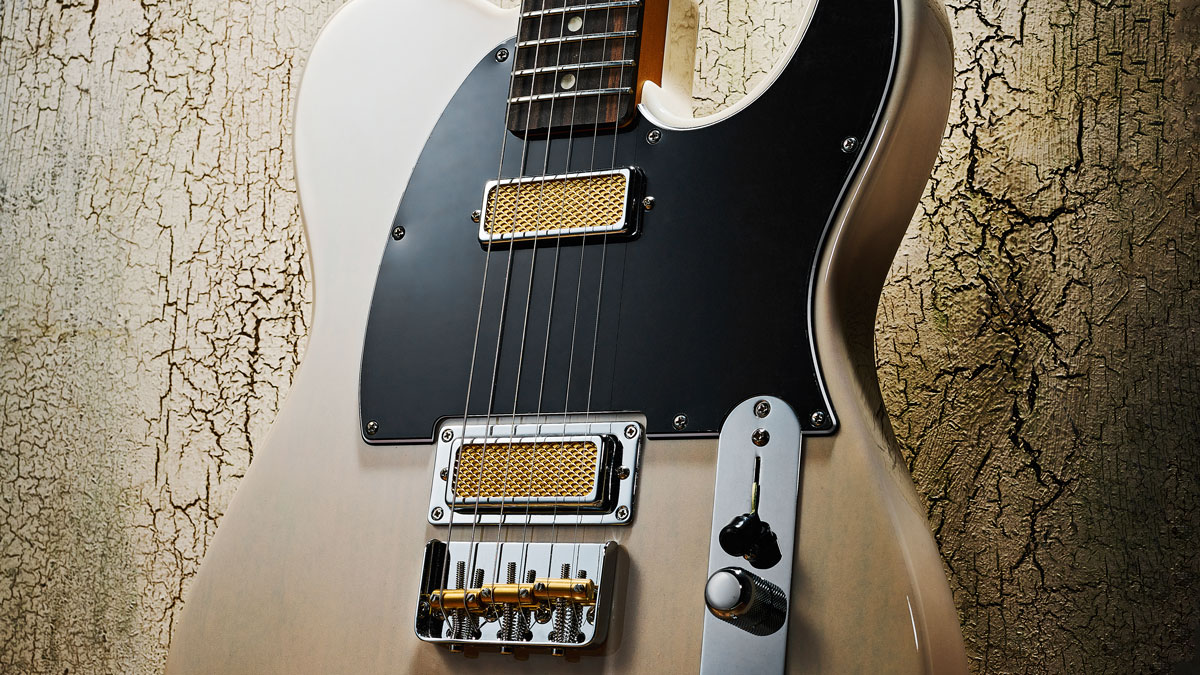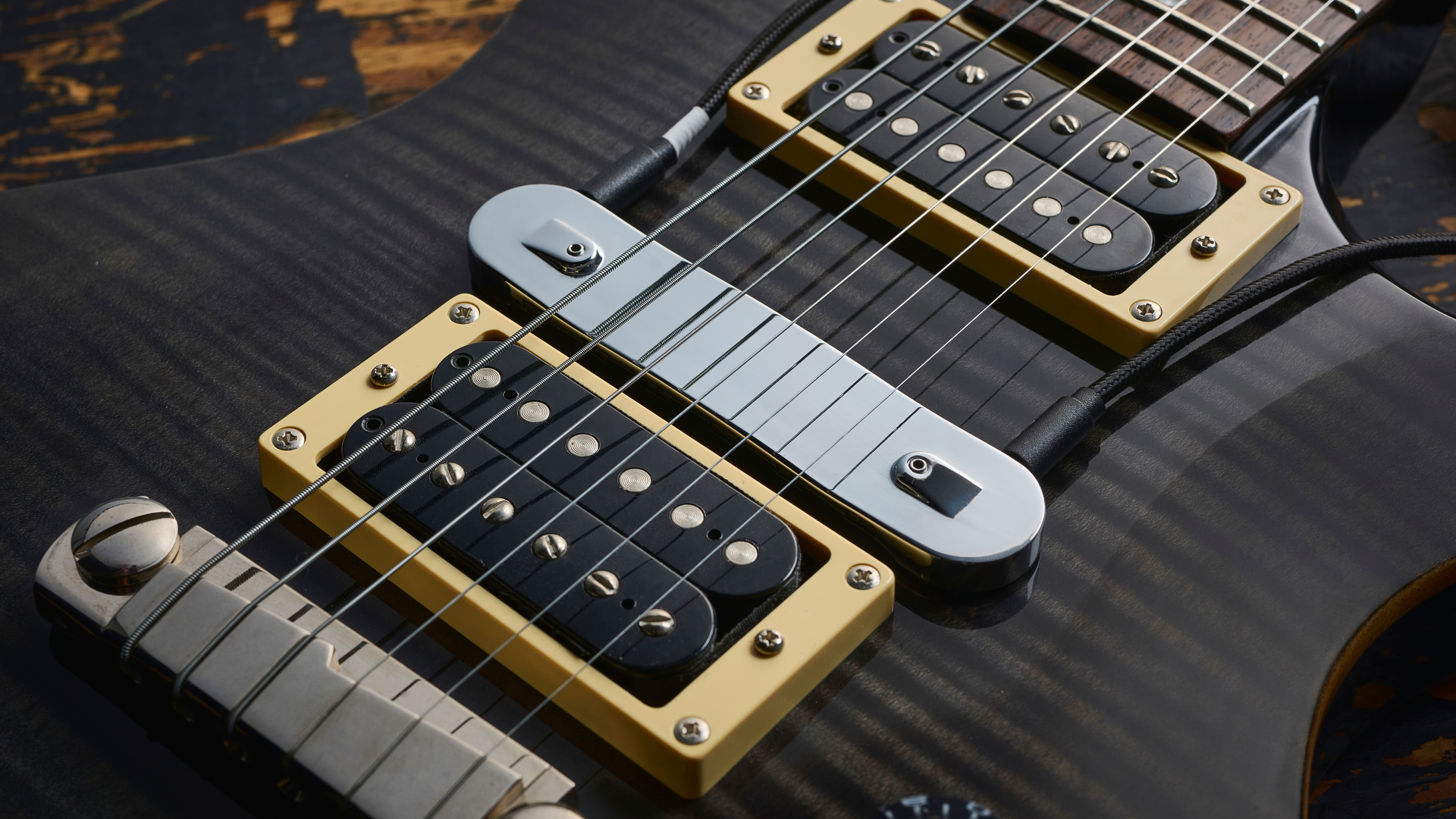Guitar World Verdict
A well-built Telecaster that delivers a distinct, fresh tone with impressive hum-cancellation. Nice looks, too.
Pros
- +
Good detail to build.
- +
Good weight and setup.
- +
Hum-cancelling sounds produce a credible Tele with a different sonic flavour.
Cons
- -
Those bridge saddles could easily be compensated.
- -
If the protruding bridge saddle adjustment screws bother you, then you’ll need to shim the neck.
You can trust Guitar World
Continuing a long run of pickup-pimped Telecasters, this 2023 release sees our favourite bolt-on in new dress and with a pair of Gold Foil pickups, which, says Fender, “combines the enduring charm of mid-century mail-order guitars with the style and playability of an authentic Fender”.
Technically, there’s no such thing as a single-recipe ‘gold foil’ pickup; the style is inspired by various pawnshop-prize brands such as Teisco, Guyatone, Harmony and Kay. The pickup itself – anything with a bit of gold metallic ‘foil’ on the front with a partial metal cover – came in a variety of usually single-coil styles, some using rubberised ‘fridge’ magnets.
But, hey, they’re trendy and have been for some years with many pickup makers offering their own versions, from Jason Lollar’s boutique style to Roswell’s mass-market take. Fender tells us these are mini-humbuckers, not single coils, but that’s about it.
Before we dig deeper into the pickups, this Mexican-made Telecaster is also unusual in that, firstly, it uses mahogany for its standard slab body, which appears lightly striped through the slightly translucent White Blonde finish. We also get a Gibson-radius (305mm/12-inches) ebony fingerboard and some pretty big frets compared with vintage style.
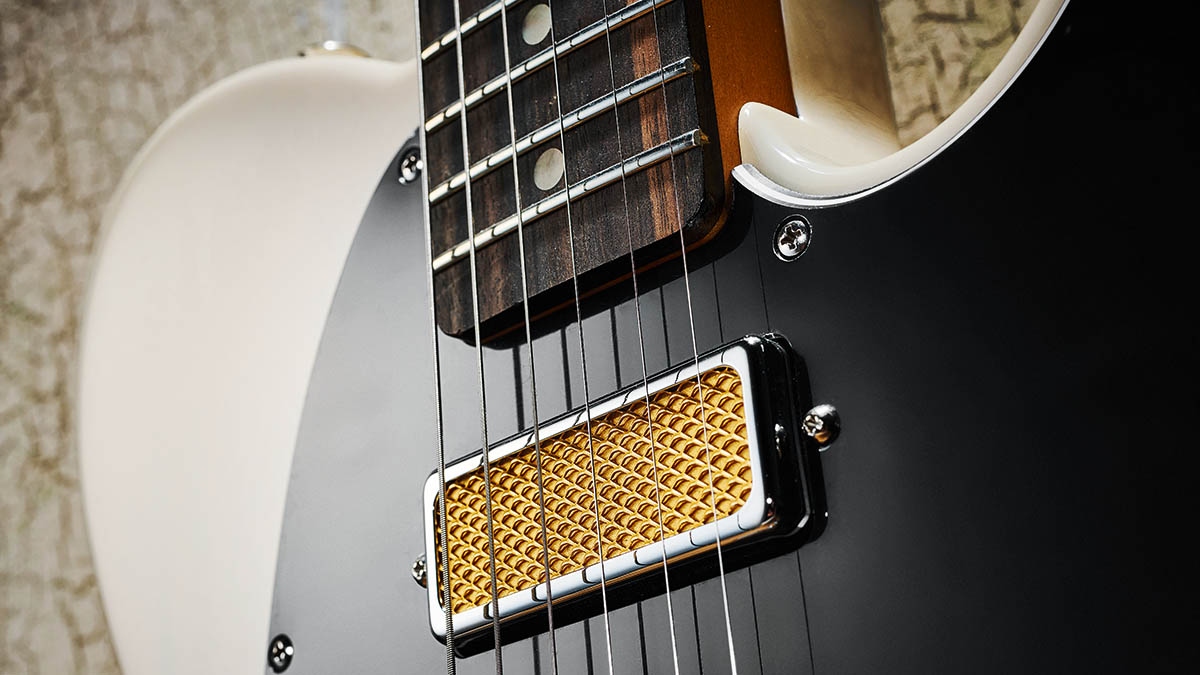
Then there’s the cut-off Tele-style bridge, with its uncompensated brass saddles, that allows the bridge pickup to sit tidily in front in its own chromed pickup-mounting ring. The neck pickup is placed a little lower than normal towards the bridge and is suspended on the laminated black-faced scratchplate.
It’s the sort of mash-up that’s a part of many boutique builders’ catalogues, and although it’s hardly an impulse buy at this asking price, it’s significantly less expensive than those small-’shop builds.
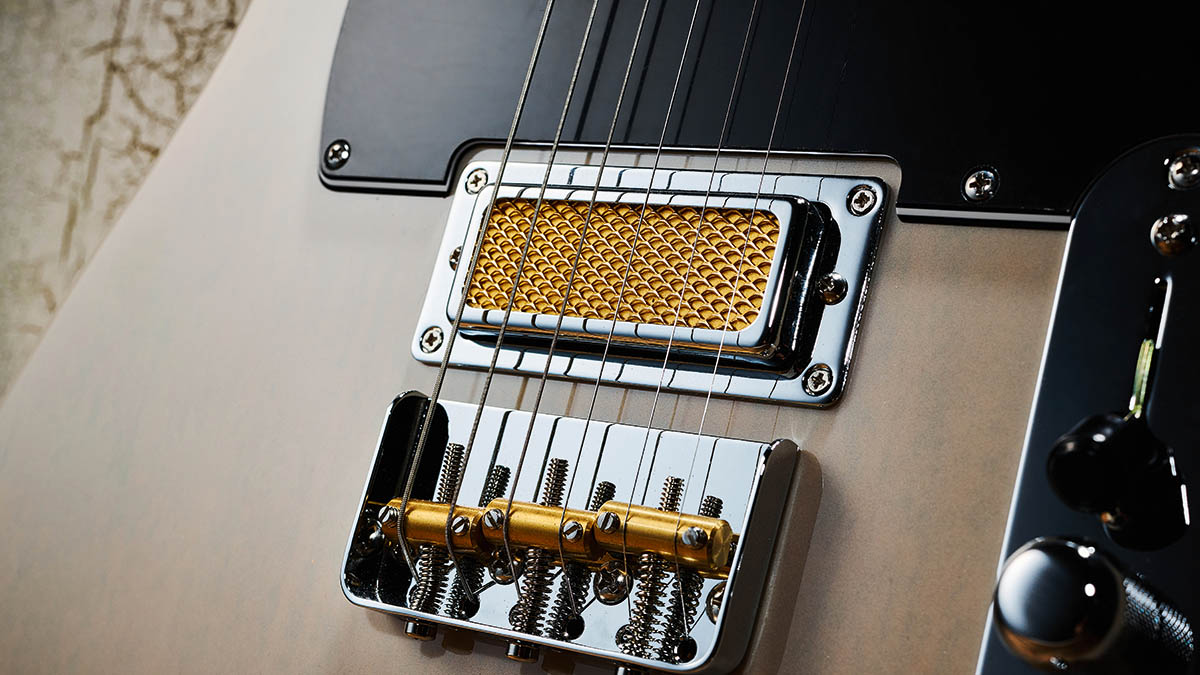
Feel & Sounds
Despite our tongue-in-cheek introduction and this model’s differences, our Gold Foil Tele is very much a Telecaster and feels like any other with a pretty standard weight of 3.61kg (7.94lb). There’s nothing new to get used to here, either: for example, the chromed control plate is standard (not reversed) and there’s no angled three-way switch or wiring tricks.
The neck has quite a deep tint to the satin finish on the back and is a perfectly good relaxed slim ‘C’, measuring 20.8mm deep at the 1st fret and 23mm by the 12th with a typical Fender 42.2mm width at the nut.
The ebony fingerboard, with its light edge rolling, is almost jet black with some striping that shows off the well-installed and very well-polished medium jumbo frets (which measure approximately 2.6mm wide with a height of 1.15mm). Compared with a big ’50s neck with its small radius and small frets, this does feel quite different; it’s more contemporary, a sort of Tele for a Gibson player.

If that were the aim then the neck pickup is where the money lies. It’s full and clear sounding but with a clean humbucker flavour. It’s rather contrasted by the bridge, which definitely sounds more ‘Telecaster’ and has plenty of (maybe a little too much) high-end bite that sounds a little sweeter with slight volume reduction and/or tone roll-off.
The parallel mix is another strong sound, the depth of the neck contributing with the added sparkle of the bridge
The parallel mix is another strong sound, the depth of the neck contributing with the added sparkle of the bridge – there are some really useful rhythm sounds here. The pickups seem only lightly potted, which adds to the liveliness, especially with some grit and gain. And, being hum-cancelling, they’re very quiet in terms of hum pick-up.
It’s well set up, too. In fact, as supplied, the string heights were a little low for us, and slightly raising the saddles also helps to bury those slot-head adjustment screws. That said, although there’s already a glass-paper shim in the neck pocket, you might want to increase the thickness of the shim to completely bury those sharp-edged adjustment screws; the outer two screws should really be slightly shorter in height.
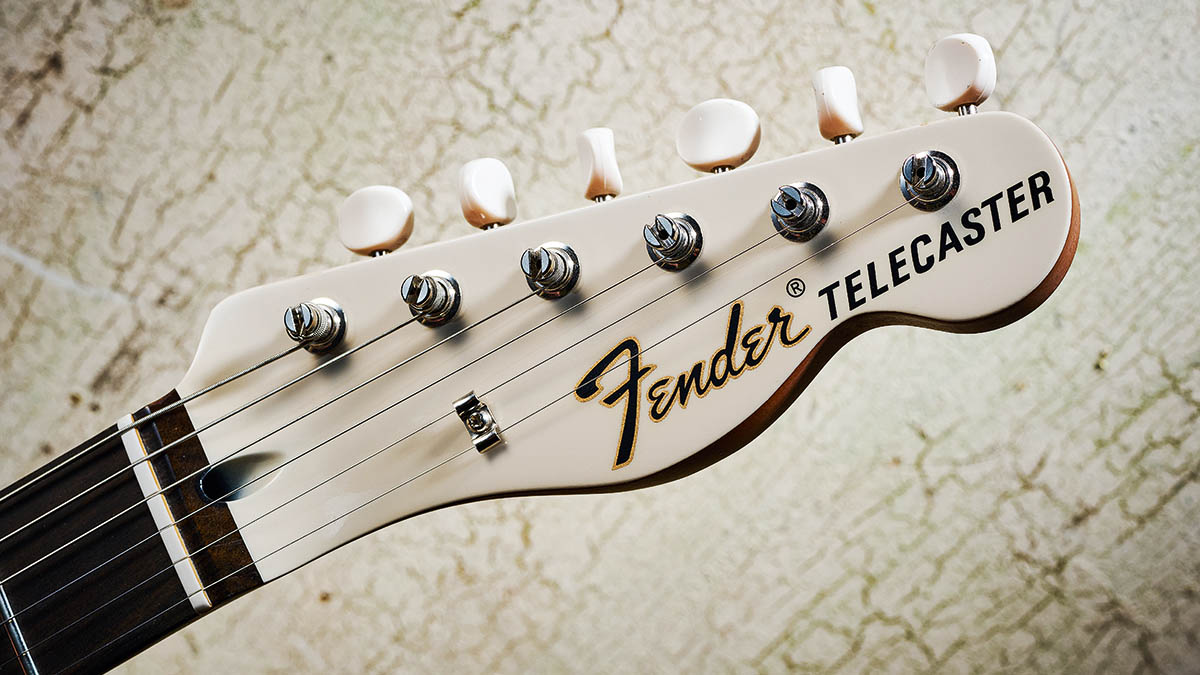
Verdict
While limited runs of the classics, not to mention a plethora of artist models, seem to be becoming the norm for both the giants of our industry and plenty of other large-scale makers, it means we’re getting an increasing choice with our much-loved classic designs.
So, another Tele flavour? Very much so, and just as important as those Gold Foil pickups is the quiet hum‑cancellation that removes one of the age-old problems with the Tele. While you might need to tame the bite of the bridge pickup, both the neck and mix are especially strong, valid voices.
Plus, of course, while this is not the only Tele available with humbuckers, it is the only current model with mini-humbuckers, so if you want to experiment with other aftermarket mini‑humbuckers, or Firebird-style minis, what better platform?
Specs

- PRICE: $1,199 / £1,219 (inc gigbag)
- ORIGIN: Mexico
- TYPE: Single-cutaway, bolt-on electric
- BODY: Mahogany
- NECK: Maple, ‘60s ‘C’ profile, bolt-on
- SCALE LENGTH: 648mm (25.5”)
- NUT/WIDTH: Synthetic bone/42.2mm
- FINGERBOARD: Ebony, white pearloid dot inlays, 305mm (12”) radius
- FRETS: 21, medium jumbo
- HARDWARE: Custom ‘cut-off’ Tele bridge with 3x brass saddles (strings-through-body or top- load), Vintage-style tuners with white buttons
- STRING SPACING, BRIDGE: 54mm
- ELECTRICS: Gold Foil mini-humbuckers (neck and bridge), 3-position level pickup selector, master volume and tone
- WEIGHT(kg/lb): 3.61/7.94
- OPTIONS: No
- RANGE OPTIONS: The mini Gold Foil range also includes the 3-pickup w/ Bigsby Jazzmaster (£1,439) and Jazz Bass (£1,299)
- LEFT-HANDERS: No
- FINISHES: White Blonde (as reviewed), Candy Apple Burst – gloss polyester body w/ matching headstock; satin urethane neck back
- CONTACT: Fender

Dave Burrluck is one of the world’s most experienced guitar journalists, who started writing back in the '80s for International Musician and Recording World, co-founded The Guitar Magazine and has been the Gear Reviews Editor of Guitarist magazine for the past two decades. Along the way, Dave has been the sole author of The PRS Guitar Book and The Player's Guide to Guitar Maintenance as well as contributing to numerous other books on the electric guitar. Dave is an active gigging and recording musician and still finds time to make, repair and mod guitars, not least for Guitarist’s The Mod Squad.
“What blew me away was that everyone wanted the curly maple top. People were calling, saying, ‘I’ve got to have the bird inlays’”: Paul Reed Smith on raising the Standard 24, finally cracking the noise-free guitar and why John Sykes is a tone hero
“It combines unique aesthetics with modern playability and impressive tone, creating a Firebird unlike any I’ve had the pleasure of playing before”: Gibson Firebird Platypus review
